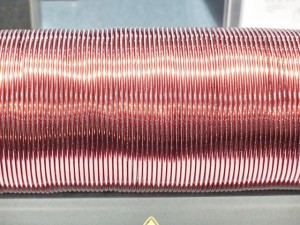 Economic recovery is helping copper maintain it prices for next year, but for the most part, it is Chinese demand that has kept the precious metal’s price from dropping.
Economic recovery is helping copper maintain it prices for next year, but for the most part, it is Chinese demand that has kept the precious metal’s price from dropping.
Oscar Gonzalez Rocha, CEO of Southern Copper Corp., is expecting China’s high demand for copper to support its $3 a pound price. The price of copper in 2013 was $3.34 a pound while this year’s average is down from an expected $3.11 per pound rate. “They (Chinese buyers) will continue to consume copper, and this will keep a balance in prices that even if we aren’t at the $4 a pound that we saw a couple of years ago, prices will be maintained at around $3 a pound,” said Rocha.
A handful of copper mining companies, including Southern Copper, are reaching their bottom line with where copper prices are hitting. Next year’s increased production and lower fuel costs will have to compensate for the copper pricing drops. “In the best case it will be somewhat the same due to the lower prices although production will increase. One thing will compensate for the other,” said Gonzalez Rocha.
With these positive signs from oversea markets and pick-ups in spot demand, copper futures went up by 0.68% to Rs 401.35 per kg. At the Multi Commodity Exchange, copper for delivery in February next year was trading higher with a turnover of 1,493 lots. Globally, copper added $68 for three-month delivery, up 1.1%, to $6,448 a ton on the London Metal Exchange (LME), while in Shanghai, copper moved up 1.1% to 45,72- yuan ($7,433) a ton.
Market analysts attributed the rise in copper not only to Chinese demand, but also to the trend on the LME regarding expectations of steady growth in the US labor market. But as the second largest consumer of metals, the US labor market might not be the only contributing factor. Mongolia’s largest copper and gold mine took a big hit in production after an industrial fire devastated operations.
Oscar Gonzalez Rocha, CEO of Southern Copper Corp., is expecting China’s high demand for copper to support its $3 a pound price. The price of copper in 2013 was $3.34 a pound while this year’s average is down from an expected $3.11 per pound rate. “They (Chinese buyers) will continue to consume copper, and this will keep a balance in prices that even if we aren’t at the $4 a pound that we saw a couple of years ago, prices will be maintained at around $3 a pound,” said Rocha.
A handful of copper mining companies, including Southern Copper, are reaching their bottom line with where copper prices are hitting. Next year’s increased production and lower fuel costs will have to compensate for the copper pricing drops. “In the best case it will be somewhat the same due to the lower prices although production will increase. One thing will compensate for the other,” said Gonzalez Rocha.
With these positive signs from oversea markets and pick-ups in spot demand, copper futures went up by 0.68% to Rs 401.35 per kg. At the Multi Commodity Exchange, copper for delivery in February next year was trading higher with a turnover of 1,493 lots. Globally, copper added $68 for three-month delivery, up 1.1%, to $6,448 a ton on the London Metal Exchange (LME), while in Shanghai, copper moved up 1.1% to 45,72- yuan ($7,433) a ton.
Market analysts attributed the rise in copper not only to Chinese demand, but also to the trend on the LME regarding expectations of steady growth in the US labor market. But as the second largest consumer of metals, the US labor market might not be the only contributing factor. Mongolia’s largest copper and gold mine took a big hit in production after an industrial fire devastated operations.

















